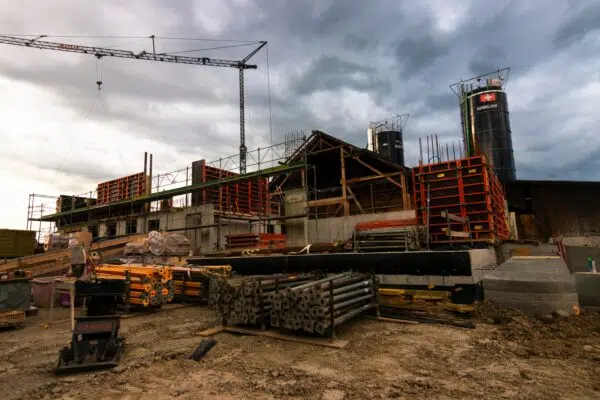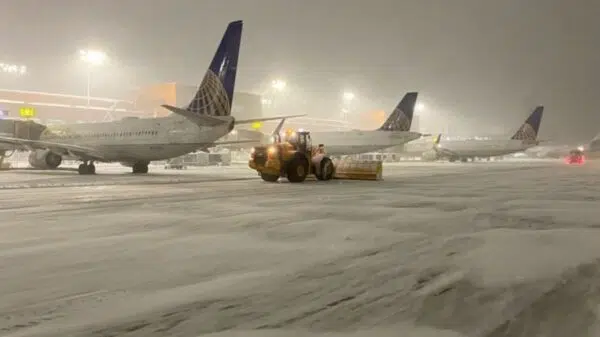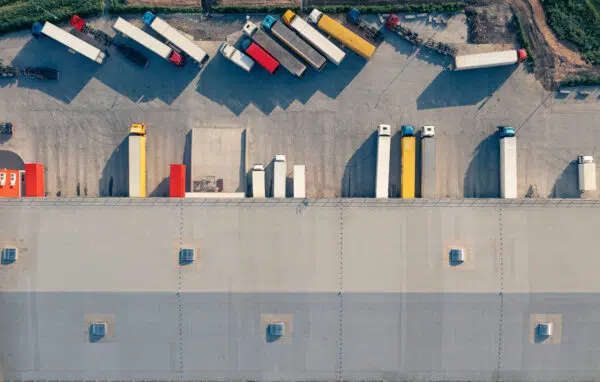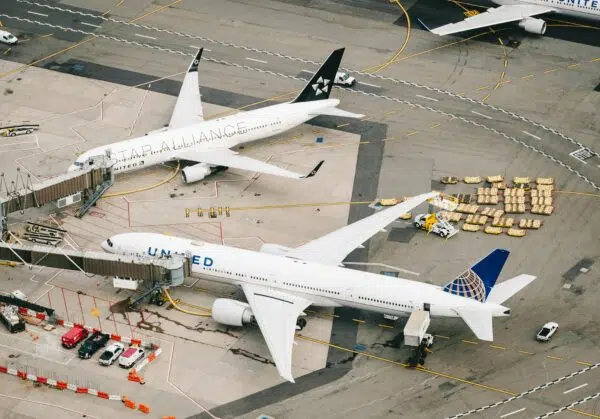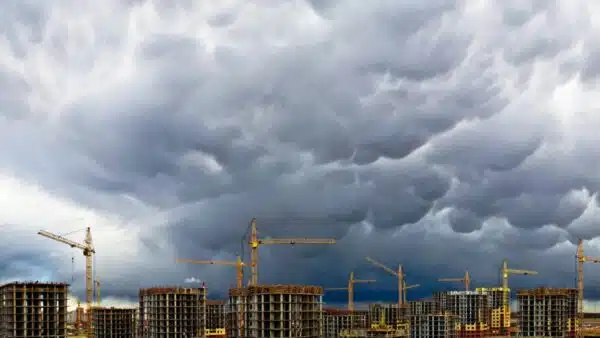As the tools in our tech toolbox evolve and expand, a new player emerges to combat, mitigate, and help us adapt to one of humanity’s most complex and dire situations—climate change. Climate AI is here to support such goals.
Climate AI is an innovative and powerful tool designed to assist organizations in adapting to the impacts of climate change. Unlike solutions focusing solely on mitigating carbon emissions or preventing the climate crisis, Climate AI helps to address the urgent need to prepare for and adjust to the ever-increasing occurrences of extreme and high-impact weather events, rising temperatures, and other climate challenges.
By harnessing the capabilities of artificial intelligence and machine learning, climate AI is an adaptation tool that provides valuable insights and predictions on the potential impacts of climate change and immediate extreme weather. This adaptation capability enables decision-makers in both public and private sectors to understand and respond to the environmental impact of their actions, identify vulnerabilities in their operations, and develop strategies to build climate resilience.
What is Climate AI?
Climate AI is an innovative approach that leverages artificial intelligence to analyze and interpret vast amounts of climate data, enhancing the prediction and management of hazardous weather events.
Together with weather AI technologies, like Tomorrow.io’s Gale, the world’s first application of weather and climate-generative AI, climate AI provides a seamless interface for businesses and organizations to forecast weather patterns, enabling them to proactively implement mitigation strategies. Instead of merely reacting to weather changes, climate AI empowers decision-makers to anticipate and adapt to climate-related risks, driving sustainability and efficiency in operations. With climate AI’s data-driven insights, organizations can now align their practices with environmental concerns, transforming their approach to weather and unlocking new opportunities in the era of climate change.
AI, Weather Forecasting, and the Climate Crisis
Weather vs Climate: What’s the Difference?
To fully grasp the magnitude of this problem, we need to make a notable distinction between ‘weather’ and ‘climate.’ Although often used interchangeably, they are not synonymous.
‘Weather’ refers to atmospheric conditions over short periods—think rain or sunshine—while ‘climate’ describes long-term patterns within specific regions or across the globe.
Climate involves accumulated weather statistics measured over extended periods, such as average rainfall or temperature changes year after year.
The Use of AI in Weather Forecasting
Harnessing AI for weather forecasting purposes has experienced rapid growth thanks to technological advancements. Rather than relying solely on traditional methods to predict local conditions, meteorologists now resort to machine learning algorithms that facilitate real-time analysis of large-scale atmospheric datasets.
The utilization of AI innovations allows improved prediction accuracy matched with speed—an important factor when it comes to early warning systems where every minute counts. Consequently, AI’s influence has revolutionized how we interact with our environment, from day-to-day planning all the way to disaster management strategies.
Technologies Used in Weather AI
To combat the impending effects of climate change, we need better tools to predict adverse weather events and insights into how to operationally prepare for the impact. Tools like Tomorrow.io’s weather and climate adaptation software leverage a combination of technology that provides weather information to various sectors.
Predictive Modeling
Tomorrow.io’s predictive models form the backbone of our services. These models convert raw meteorological data into valuable, actionable insights. The result? Organizations around the world looking to adapt to weather changes can strategize proactively around potential high-impact weather conditions.
AI & Space Technology
With AI/ML algorithms, cutting-edge sensor technology, and upcoming satellite data, Tomorrow.io provides precise hyper-local forecasts and insights for a variety of industries.
Tomorrow.io’s predictive models transform raw weather data into actionable insights for strategizing around impending weather disruptions. These insights offer a superior forecasting solution and enable businesses to plan effectively against severe weather conditions — from incoming storms that will lead to flooding to the intense heat that causes heat domes around the world.
Tomorrow.io’s Satellite Constellation
Tomorrow.io launched proprietary weather radar satellites, Tomorrow-R1 and Tomorrow-R2, into Earth’s orbit, heralding a transformative age in global weather forecasting.
Underpinned by generative weather and climate AI, these satellites constitute a constellation that will allow for near-real-time monitoring of precipitation and atmospheric conditions – a transformative leap providing a significantly more accurate and timely weather forecast to those who need it most.
Weather AI: Gale from Tomorrow.io
Gale, the world’s first AI-driven weather and climate chat, enhances Tomorrow.io’s capabilities in weather AI and climate AI. Gale provides more than just weather information; it crafts a conversation where users can interact, ask questions, and receive personalized weather insights for their specific organizational or operational needs.
With Gale, people, businesses, and governments can operationalize around weather, mitigate the impact of hazardous conditions, and leverage new weather data in their forecasts.
Join the Gale Waitlist to Experience the Power of Weather AI for Yourself
How Can We Leverage AI Tools for Climate Adaptation?
AI is a critical ally in combatting climate change, providing essential tools to foster global resilience and adaptation. Machine learning models analyze complex weather patterns and predict extreme events like hurricanes and floods, enhancing preparedness.
Using AI tools for climate adaptation can look like leveraging AI-based early warning systems (EWS) that leverage weather intelligence to identify environmental hazards and send out timely alerts. These systems bolster community defenses, facilitating efficient evacuation and resource strategies. One area that AI can also support is resilient agricultural practices, providing farmers with vital information on weather changes, crop selection, and harvesting times, thus promoting sustainable farming.
Tomorrow.io plays a key role in climate adaptation, creating high-resolution models predicting localized weather with incredible accuracy. More than mere predictions, Tomorrow.io’s weather intelligence transforms insights into actionable guidance. By delivering real-time alerts about adverse weather events, stakeholders can take effective preventive actions.
This AI approach offers substantial value, especially to developing nations that often lack access to advanced weather forecasting technologies. Today, nearly 70% of the world lacks radar coverage. This means that nearly 2/3 of the world does not have accurate weather forecasting to help them prepare.
AI tools enable better preparedness against natural disasters, which benefits us all.
What are the Benefits of Climate AI For Businesses?
The benefits of Climate AI are many, including improved risk mitigation, the ability to implement easy-lift early warning systems, cost savings around weather, and overall climate resilience. By combining the forces of ML models with AI-backed industry-specific insights on how to operate around the forecast, organizations have a leg up against high-impact weather. Below are a few examples highlighting existing uses of AI and weather intelligence.
Risk Mitigation: Early Warning Systems for Community and Business Impact
Climate crisis increases the frequency and intensity of catastrophic events like hurricanes, wildfires, and floods. To ensure community safety and maintain business continuity amidst these adversities, early warning systems are critical.
And climate AI can support these initiatives.
Advanced algorithms can analyze vast amounts of climate data from global sources in real time, predicting potentially harmful weather much faster than traditional methods. Because these systems are built with machine learning techniques, they learn from each event, consistently improving accuracy over time.
Enhanced accuracy translates to more effective disaster prevention strategies, helping communities and businesses prepare better for extreme weather events. An improved EWS can save lives and save on the costs of resolving weather impacts.
Cost Savings: Leveraging AI for Optimized Operations
In addition to improving safety measures, climate AI offers financial advantages against weather’s impact. With accurate predictions, industries can orchestrate their operations more efficiently, leading to significant cost savings.
For example, think of a major airline; using precise forecasts that provide information on wind patterns or ground temperature data across flight paths can save substantially on fuel costs and optimize crew schedules resulting in increased efficiency and profitability.
Tomorrow.io already supports businesses like JetBlue to help them save money on canceled and delayed flights. Steve Olson, Vice President, System Operations at JetBlue, says, “The rate in which we have canceled flights, the rate in which we’ve delayed flights associated with weather has improved remarkably just in one year’s time frame. [Tomorrow.io] is already saving [JetBlue] $300,000 every month, $3.7 million in a year.”
Enhancing Climate Resilience: AI for Agriculture Predictions
Agriculture, an industry that’s highly susceptible to climatic variations, has started to embrace modern technologies, including AI innovations. These innovations aim to minimize risks associated with shifting climate patterns while simultaneously boosting yield production.
With the aid of artificial intelligence and machine learning, predictive models can now precisely forecast rainfall patterns or potential pest infestations well in advance. This foresight drastically enhances crop resilience and allows farmers to adapt their strategies accordingly, ensuring food security even under challenging environmental conditions.
Tomorrow.io is equipped to support the agriculture industry and is already doing so through a partnership with TomorrowNow.org. In 2020, Tomorrow.io was positioned to solve a significant locust problem in East Africa by:
- Identifying areas where locusts were repopulating and stopping them by spraying pesticides with drones
- Knowing where existing swarms were raveling next
- Warning communities in advance so they can harvest their crops and protect food supplies
The combination of weather intelligence and AI goes beyond merely advancing risk mitigation and cost-saving objectives. It also fosters a resilient and adaptable society, more capable of combating environmental unpredictability both effectively and efficiently.
Ready to Take Your Weather Management to the Next Level?
How Can Different Industries Use Climate AI?
Different industries can use climate AI and weather intelligence to optimize their emergency preparedness, improve early warning systems, and optimize their operations and decision-making processes around high-impact weather.
Using Tomorrow.io’s weather and climate adaptation platform, organizations around the world can address the challenge of combating and adapting to climate change.
Climate AI for Construction
The construction industry is especially susceptible to climate change and must integrate new technology to adapt. Extreme weather events like hurricanes, floods, and soaring temperatures, and their increasing severity, pose significant risks to both ongoing projects and existing structures.
With an AI-backed climate adaptation strategy, the construction industry will benefit from:
- Risk Prediction: By analyzing long-term trends and real-time data, climate AI tools can forecast adverse weather conditions. These early warning systems allow construction managers to adjust schedules or take precautionary measures to ensure worker safety and avoid costly damages.
- Resilient Building Design: Climate AI can help support better building designs in specific locations that are more at risk of hazardous weather
- Efficiency Optimization: Weather significantly impacts construction efficiency – think halted work during rains or lowered productivity due to severe heatwaves. Knowledge derived from AI aids in adopting flexible scheduling methods minimizing delays imposed by unfriendly weather patterns.
Climate AI for Aviation
The aviation industry is in the midst of extraordinary digital transformation. An integral part of this shift owes its credit to the rapid evolution of AI tools.
- Improved Flight Planning: By leveraging large historical and real-time meteorological data sets alongside machine learning models, AI can support the intricacies of flight planning. AI can inform flight routes with predictions on wind speed/direction trends and atmospheric pressure gradients, which contribute significantly to optimizing fuel consumption.
- Optimized De-Icing Procedures: Weather intelligence provides insights to ground crews on optimal times to de-ice a plane, improving ground operations and getting planes moving in a timely manner
- Reduced Cancellations and Delays: With AI tools, airlines like JetBlue see a reduction in cancellations and delays around the weather; climate AI can help combat such situations.
Climate AI for Logistics and Transportation
The logistics and transportation sector is a critical component of global commerce, but it also stands as one of the sectors most vulnerable to climate change disruptions. By employing AI for climate resilience in this industry, we can foster an environment where operations continue smoothly despite weather impediments.
- Global Commerce Stability: The logistics and transportation sector is vital for global commerce but vulnerable to climate disruptions. Climate AI ensures smooth operations despite weather impediments.
- Predictive Analytics: Advancements in AI introduce predictive analytics to transportation, allowing companies to gain insights from past weather data and prepare for future conditions.
- Route Optimization: Climate AI systems can present likely routes and strategies based on current and forecasted weather and traffic data, allowing businesses to adjust routing or delivery schedules for storms or temperature spikes.
Climate AI for Energy and Utilities
Climate AI integration into the energy and utilities sector is noteworthy, exhibiting promising potential to boost both efficacy and resilience. With climate change artificial intelligence in place, we’re observing a decisive move towards ensuring the robustness of these essential services regardless of existing weather extremities.
- Boosting Efficacy and Resilience: Climate AI integration into energy and utilities demonstrates the potential for increasing efficiency and resilience, ensuring robustness even in extreme weather conditions.
- Predicting Power Outages: AI innovations, including Machine Learning algorithms, can predict power outages based on historical data and weather forecasts, allowing utility providers to strategically deploy resources to optimize response and recovery efforts.
- Renewable Energy Management:
- Weather-dependent sources such as solar or wind power require adaptive management based on prevailing climatic conditions.
- Climate AI can forecast such variabilities with remarkable accuracy.
- This enables dynamic adjustments to power grids, reducing reliance on fossil fuels.
Climate AI for Agriculture
Farmers worldwide face the daunting challenge of adapting to unpredictable weather patterns exacerbated by climate change. With such weather hazards becoming more volatile, more frequent, and more severe, climate AI is the solution the agriculture industry needs most.
- Optimizing Crop Yields and Resource Management:
- AI-powered predictive analytics tools leverage climatic data to present accurate forecasts.
- Climate AI predicts rain patterns and other weather conditions, aiding in smart irrigation planning and effective resource allocation.
- Mitigating Risks from Extreme Weather:
- Climate Change AI uses specialized algorithms to predict heatwaves or frost likelihoods.
- These insights enable farmers to take precautionary measures, reducing crop loss.
- Disease Detection and Pest Control:
- Machine learning within Climate AI analyzes image data for early detection of plant diseases or pest infestations.
- Sophisticated models identify signs often before they’re visible to the human eye.
Conclusion: The Future of AI and Climate
Navigating the wild world of climate change is no small task, but AI is stepping up in this global challenge. From predicting weather patterns to saving money in various industries, AI will better prepare us for climate adaptation as the world’s weather gets hotter, colder, and wetter.
As climate AI technology continues to evolve, we can expect more advanced capabilities and improved integrations for AI in all sectors. With ML modeling improvements, we will have access to better weather forecasts that, when combined with historical weather data, will inform our decision-making and improve operations everywhere.
By partnering with innovative providers like Tomorrow.io and investing in weather AI, businesses can stay ahead of the curve, optimize operations, manage risks, and seize new opportunities in the face of an uncertain climate future.



